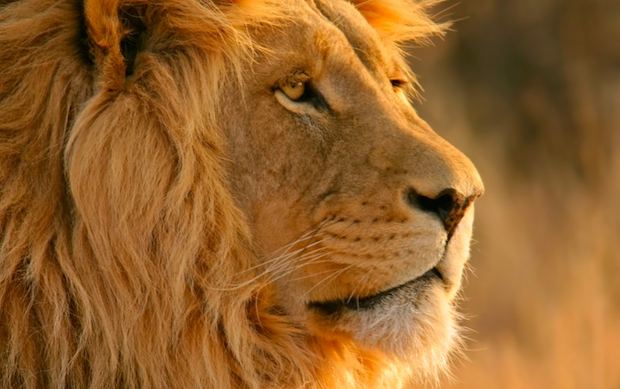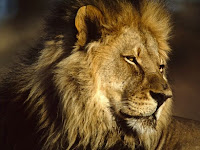 |
| Lion |
A pride of lions consists of related females and offspring and a small number of adult males. Groups of female lions typically hunt together, preying mostly on large ungulates. Lions are apex and keystone predators, although they scavenge as opportunity allows. Highly distinctive, the male lion is easily recognised by its mane, and its face is one of the most widely recognised animal symbols in human culture. Depictions have existed from the Upper Paleolithic period, with carvings and paintings from the Lascaux and Chauvet Caves, through virtually all ancient and medieval cultures where they once occurred. It has been extensively depicted in sculptures, in paintings, on national flags, and in contemporary films and literature.
Traditionally, 12 recent subspecies of lion were recognised, distinguished by mane appearance, size, and distribution. Because these characteristics are very insignificant and show a high individual variability, most of these forms were probably not true subspecies, especially as they were often based upon zoo material of unknown origin that may have had "striking, but abnormal" morphological characteristics. Today, only eight subspecies are usually accepted, although one of these, the Cape lion, formerly described as Panthera leo melanochaita, probably is invalid. Even the remaining seven subspecies might be too many.
some sub-species are :
 |
| Asiatic Lion |
 |
| Barbary Lion |
- P. l. senegalensis, known as the West African lion, is found in western Africa, from Senegal to the Central African Republic.
 |
| African Lion |
- P. l. nubica, known as the East African or Masai lion is found in East Africa, from Ethiopia and Kenya to Tanzania and Mozambique; a local population is known as the Tsavo lion.
- P. l. bleyenberghi, known as the southwest African or Katanga lion, is found in southwestern Africa, Namibia, Botswana, Angola, Katanga (Democratic Republic of the Congo), Zambia, and Zimbabwe.
- P. l. krugeri, known as the southeast African or Transvaal lion, is found in the Transvaal region of southeastern Africa, including Kruger National Park.
 |
| Cape Lion |

No comments:
Post a Comment